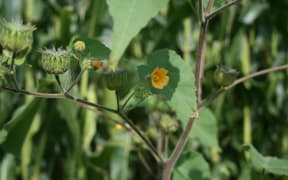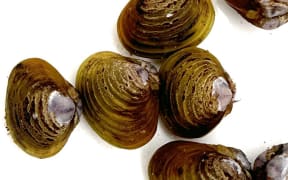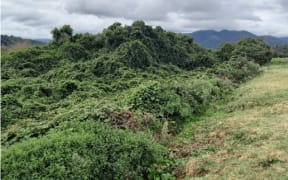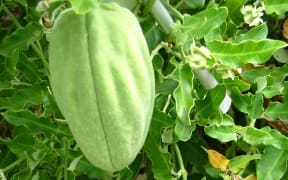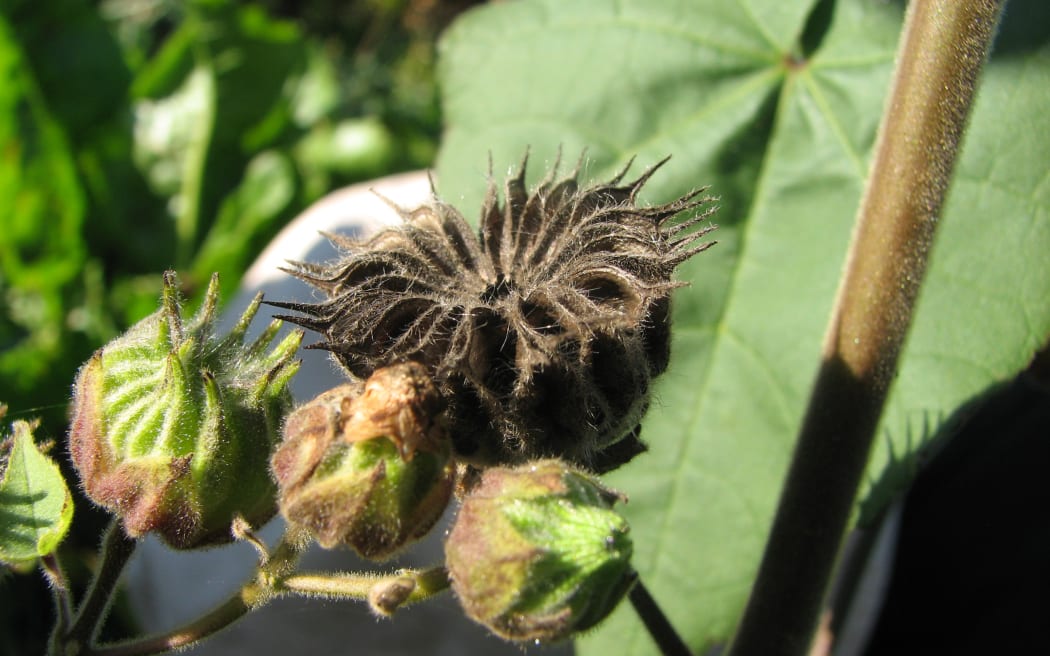
The blackened seed head of the velvetleaf plant - a highly invasive weed which has been found on two new properties in the Waikato Region. Photo: Supplied / Waikato Regional Council
One of the world's most invasive weeds has been discovered on two Waikato maize farms, after decades of trying to control it.
Velvetleaf can grow up to 2.5 metres tall, it has large, heart-shaped leaves with pointy tips and velvety hairs, and small, buttery yellow flowers.
It originated from China and India, and has been problematic in New Zealand's arable crops in recent decades because it quickly outcompetes other plants for water and nutrients, hurting crop yields.
Mature plants can have as many as 15,000 seeds that can remain viable in the soil for around 50 years.
The latest farm finds were the first new detections in the region since 2019, during the last outbreak.
Waikato Regional Council's biosecurity pest plants team leader, Darion Embling said it was a wake-up call for the agricultural sector.
"There is a significant amount of work that has gone into controlling velvetleaf in this region since it was first discovered [here] in 2011, so it is extremely disappointing to have these two new outbreaks," Embling said.
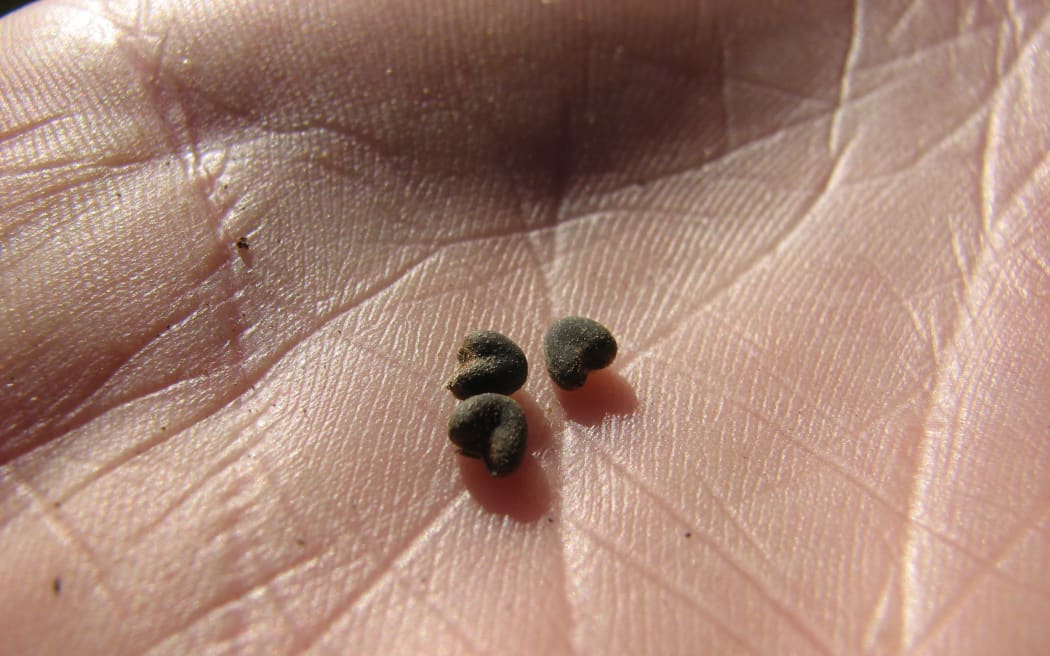
Velvetleaf seeds can remain viable in the soil for around 50 years. Photo: Supplied / Waikato Regional Council
The last national outbreak spread came from imported fodder beet in 2016, but harvesting machinery and infested feed were also common ways it spread.
"We can't be certain how velvetleaf has spread to these two properties," Embling said.
"However, tracing has historically identified machinery and infested maize silage as the most common vectors, which demonstrates the need for continued vigilance by farmers and growers, as well as rigorous machinery hygiene protocols by the cropping sector.
"Our focus is on tracing machinery and crop movement, which is critical to ensuring the risk of spread beyond these properties is effectively managed."
Embling said most infested properties were in north Waikato, Matamata-Piako and south Waikato and staff were working with landowners to develop farm management plans to manage the risk of spread as landowners were technically responsible for destroying the pest.
Federated Farmers' arable chairman for Waikato, Donald Stobie said it was "quite invasive" and could be hard to find in the paddock.
"It was thought that we'd nearly eradicated it but it appears it's shown up in a couple properties in the Waikato this year, which I suppose is good that farmers are still keeping an eye out and finding it," Stobie said.
He said it impacted yields and could spread very quickly.
"It takes over, smothers paddocks out and suppresses other grasses, and it's very hard if it gets in seed crops, it's hard to get out.
"If you do find it in your paddocks, those paddocks are meant to be quarantined for a number of years and not cropped again."
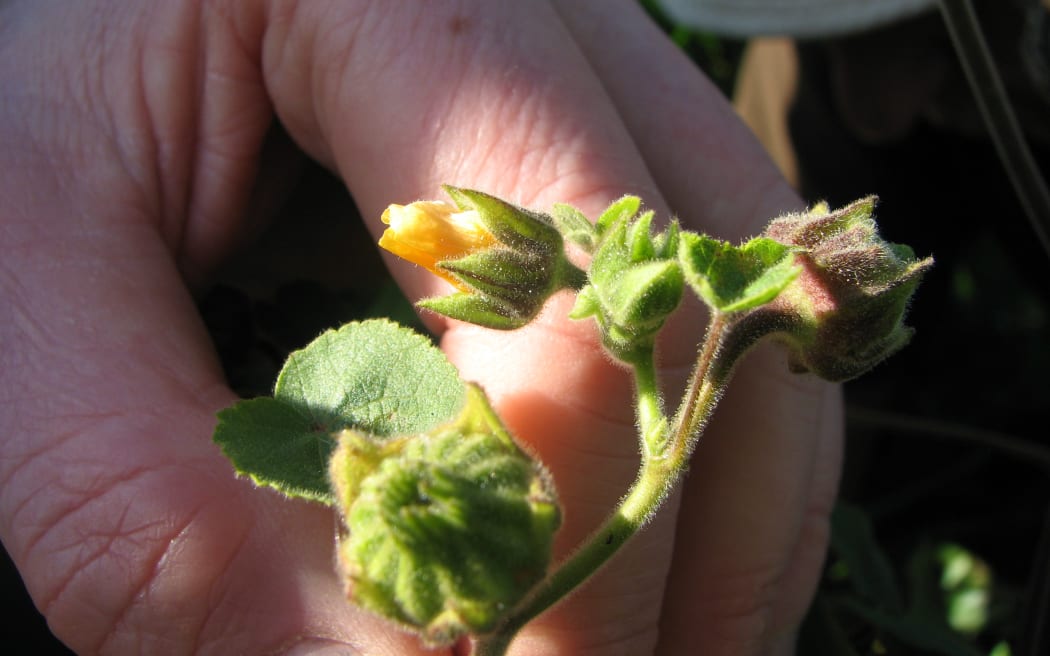
Waikato Regional Council's biosecurity pest plants team leader Darion Embling said it was not certain how velvetleaf had spread to the two Waikato properties. Photo: Supplied / Waikato Regional Council
He said farmers and growers should be vigilant in keeping an eye out for the plant in their paddocks, and keep their gear and machinery clean to reduce any spread.
"People just need to be vigilant about scouting their crops, looking for it, and where possible, have their contractors clean their gear down," Stobie said.
"Ask your contractors to keep an eye out for you, where possible make sure gear's clean coming into the property, try to have good biosecurity protocols in place."
Reports of velvetleaf can be made to the Foundation for Arable Research and the Ministry for Primary Industries.
